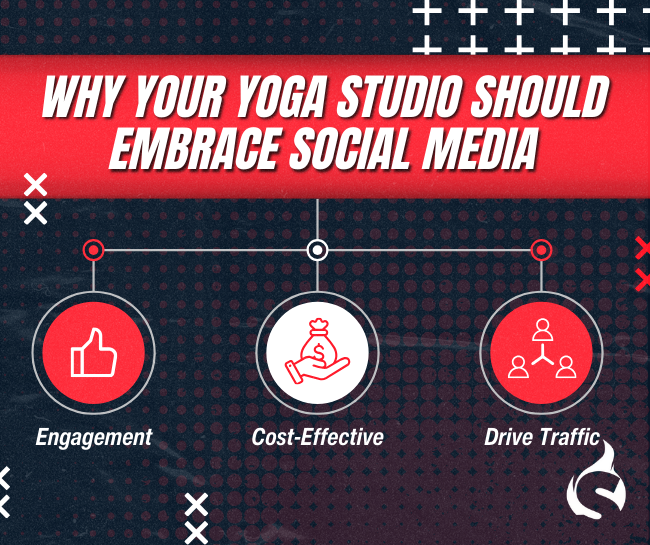Unleash the Power of Digital Zen: The Top-Secret Techniques for Elevating Your Yoga Business’s Online Presence!

Image courtesy of Pixabay via Pexels
Table of Contents
If you own a yoga business, you know how important it is to have a strong online presence. With the rise of digital marketing, it’s crucial to ensure that your business appears at the top of search engine results pages when potential clients are looking for yoga classes or studios in your area. This is where Search Engine Optimization (SEO) comes into play. In this comprehensive guide, we’ll walk you through the basics of SEO for your yoga business and provide you with actionable strategies to boost your online visibility.
Understanding the Basics of SEO
Before diving into the specifics, let’s start with the essentials of SEO. SEO refers to a set of techniques and strategies used to optimize your website and improve its visibility on search engine results pages (SERPs). By implementing effective SEO practices, you can increase organic traffic to your website, attract potential clients, and ultimately drive revenue for your yoga business.
One of the first steps in SEO is conducting keyword research. Keywords are the words or phrases that people enter into search engines when looking for specific information or services. By understanding the keywords that are relevant to your yoga business, you can optimize your website content accordingly. For instance, if you offer prenatal yoga classes, incorporating keywords like “prenatal yoga” or “yoga for expecting mothers” can help your website appear higher in relevant search results.
Additionally, user experience plays a crucial role in SEO. A well-designed website that is easy to navigate and provides valuable content will have a higher chance of ranking well in search engine results. Ensuring that your website is user-friendly and responsive on both desktop and mobile devices can enhance the overall user experience and improve your SEO performance.
Targeting Relevant Keywords for Your Yoga Business
Once you have a general understanding of SEO, it’s time to dive deeper into targeting the right keywords for your yoga business. Keyword research involves identifying the words and phrases that your potential clients are likely to use when searching for yoga services in your area.
Start by brainstorming a list of keywords that are relevant to your yoga business. Then, use keyword research tools like Google Keyword Planner or SEMrush to discover additional keywords and their search volumes. Look for keywords that have a reasonable search volume and moderate competition. These are the keywords you’ll want to focus on to increase your chances of ranking well.
Another effective strategy is to conduct competitive analysis. Study your competitors’ websites and find out what keywords they are targeting. This can help you identify valuable keywords that you might have missed during your initial research. Additionally, consider incorporating long-tail keywords into your content. Long-tail keywords are longer and more specific phrases that can attract highly targeted traffic to your website. For example, instead of just targeting “yoga studio,” you could also include long-tail keywords like “yoga studio in [your city]” or “yoga classes for beginners near me.”
When optimizing your website for keywords, it’s important to use them naturally in your content. Avoid “keyword stuffing” or overusing keywords, as search engines may penalize your website for this practice. Instead, incorporate keywords organically into your page titles, headings, meta descriptions, and throughout the body of your content. This will signal to search engines that your website is relevant to users searching for those keywords.
Crafting Engaging and SEO-friendly Content
Creating high-quality and informative content is key to engaging your audience and improving your SEO performance. When crafting blog posts or articles for your yoga business, there are several important factors to consider for optimal SEO.

Image courtesy of sparkmembership.com via Google Images
To start, make sure your content addresses the needs and interests of your target audience. Provide valuable information that will help your potential clients with their yoga journey. Use headings and subheadings to structure your content and make it easier for users to scan. Incorporate relevant keywords into your headings and throughout the body of the content, but be sure to do so naturally and avoid keyword stuffing.
Including images in your content can not only enhance the visual appeal but also contribute to SEO. Use descriptive alt text for your images and ensure that the file names are descriptive as well. This will help search engines understand the context of your images and potentially improve your rankings in image search results.
Building a Solid Backlink Profile
Backlinks, which are links from other websites to your website, play a crucial role in SEO. Search engines consider backlinks as a vote of confidence in your website’s authority and relevance. Building a solid backlink profile can significantly improve your online visibility.
One ethical way to acquire backlinks is through guest blogging. Reach out to other yoga-related websites or blogs and offer to write a guest post. In return, they may provide a backlink to your website. This not only helps you establish relationships within the yoga community but also boosts your website’s authority.
Another strategy is to collaborate with other relevant websites or businesses. For example, if you partner with a nutritionist or a fitness clothing brand, you could create content together and link to each other’s websites. This mutually beneficial arrangement can help you gain quality backlinks and increase your website’s visibility to a wider audience.
Additionally, leverage social media platforms to promote your content and engage with your audience. Sharing your blog posts or articles on social media can attract more traffic to your website and potentially lead to more backlinks from other users who find your content valuable.
Optimizing Local SEO for Your Yoga Studio
If you have a physical yoga studio, optimizing for local SEO is crucial to attracting clients in your area. Local SEO involves optimizing your website to appear in local searches and Google’s “local pack” results.

Image courtesy of www.creativefabrica.com via Google Images
Start by claiming and optimizing your Google My Business listing. Provide accurate information about your yoga studio, such as its name, address, phone number, and business hours. Encourage your clients to leave positive reviews and testimonials on your Google My Business listing, as positive reviews can significantly impact your local SEO rankings.
Consistency is key when it comes to local SEO. Ensure that your NAP (Name, Address, Phone) information is consistent across all online directories and platforms. This includes your website, social media profiles, and any other listing websites.
Tracking and Measuring SEO Success
Finally, it’s essential to track and measure the success of your SEO efforts. This allows you to identify what strategies work well and where you may need to improve. Several tools are available to help you analyze and monitor your website’s performance.
Google Analytics is a powerful free tool that provides detailed insights into your website’s traffic and user behavior. It allows you to track key metrics such as organic search traffic, bounce rate, and conversion rates. Regularly monitor these metrics to gain a deeper understanding of how your website is performing and where you can make improvements.
Additionally, consider conducting regular SEO audits to identify any technical issues that may be affecting your website’s performance. This includes checking for broken links, optimizing page load speed, and ensuring proper indexing of your website by search engines.
Keep in mind that SEO is an ongoing process. Search engine algorithms continually evolve, and competitors are always vying for the top spot. Stay up to date with the latest SEO trends and industry best practices to adapt and optimize your strategies.
Conclusion
Implementing effective SEO strategies can significantly boost your yoga business’s online visibility and attract more clients. By understanding the basics of SEO, targeting relevant keywords, crafting engaging content, building a solid backlink profile, optimizing for local SEO, and tracking your SEO performance, you can stay ahead of the competition and position your yoga business for success in the digital world. Start implementing these SEO techniques today and watch your online visibility soar.
FAQ
Question 1:
How long does it take to see results from SEO?
Answer 1:
The time it takes to see results from SEO can vary depending on various factors such as the competitiveness of your industry, the quality of your SEO efforts, and the overall health of your website. In general, it can take several months to start seeing noticeable improvements in your online visibility and organic traffic.
Question 2:
Do I need to hire an SEO agency to improve my yoga business’s online visibility?
Answer 2:
Hiring an SEO agency can be beneficial if you don’t have the time, resources, or expertise to handle SEO on your own. However, it’s possible to improve your online visibility by implementing basic SEO strategies yourself. Consider your budget and the complexity of your SEO needs before deciding whether to hire an agency.
Question 3:
Can social media marketing help boost my yoga business’s online visibility?
Answer 3:
Absolutely! Social media marketing can be a valuable complement to your SEO efforts. By sharing your content on social media platforms and engaging with your audience, you can increase brand awareness, drive traffic to your website, and potentially attract backlinks. Social media can also help you connect with influencers and build relationships within the yoga community.
Question 4:
What are some common mistakes to avoid in SEO?
Answer 4:
Some common mistakes to avoid in SEO include keyword stuffing, using irrelevant or low-quality backlinks, neglecting mobile optimization, and neglecting to regularly update and optimize your website content. It’s also important to stay updated with the latest SEO practices and algorithm changes to ensure your strategies remain effective.
Powered by Texta.ai Blog Automation


